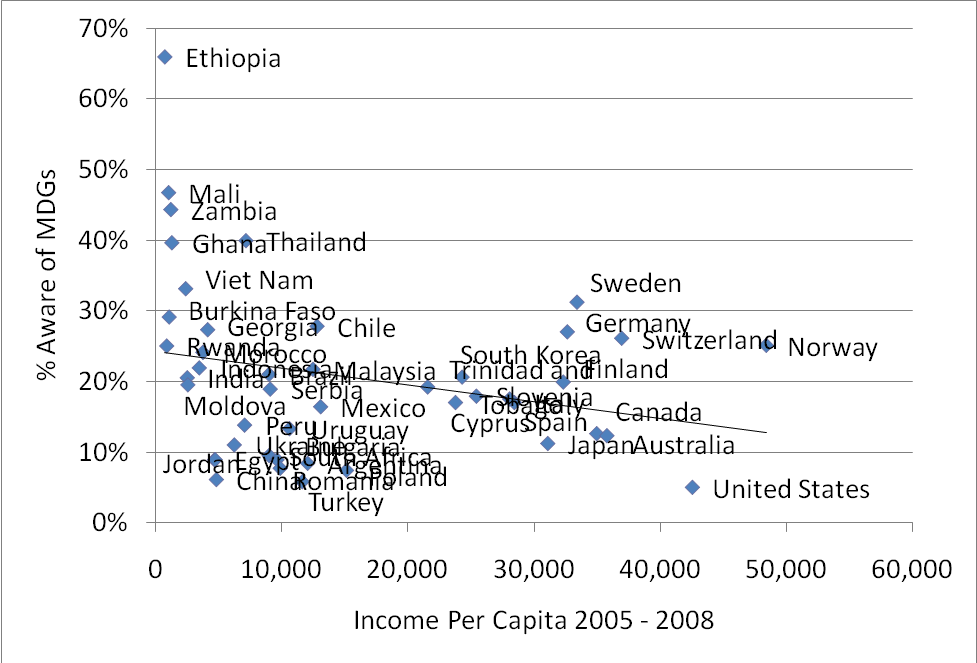The Millennium Development What?
This is a joint post written with Claudia Williamson, a post-doctoral fellow at DRI. If you’re reading this blog, and especially if you’re in New York City right now, you’re probably familiar with the Millennium Development Goals. Besides being the focus of this week’s United Nations summit, they are just (according to the UN) “the most broadly supported, comprehensive, and specific development goals” in human history. Should we fail to meet them by 2015, (according to Oxfam) “we are likely to witness the greatest collective failure in history.”
They are the Hollywood blockbuster of development targets. They may not be nuanced or realistic, but they bring in lots of money.
For the rest of the world, who may have never been inside a white Land Cruiser, or can’t tell a CIDA from a SIDA, who’s ever heard of the MDGs?
In the latest wave of the World Values Survey, taken from 2005 to 2008, people in countries around the world were asked this question.
In the US, the world’s largest donor, only 5 percent of people surveyed were willing to admit that they had heard of something called the Millennium Development Goals. (Another survey from 2010 which posed the question slightly differently found that 10 percent of Americans had heard “a lot” or “some” about the MDGs, while 89 percent had heard “not much” or “nothing at all.” Either way you slice it, more Americans now believe the US president is a Muslim (18 percent) than have heard of the MDGs.)
In Japan, the second largest donor included in the survey (there are unfortunately no figures for the UK), 11 percent had heard of the worldwide targets. The Germans and Swedes scored the highest among donors, with 27 percent and 31 percent awareness, respectively.
When we plotted data from the World Values Survey against per capita income (data from the World Development Indicators) we found a negative relationship between income levels and the percentage of respondents who had heard of the MDGs.
Ethiopia, the poorest country in the sample and a large aid recipient, registered the highest MDG awareness, at 66 percent. Mali (47 percent) and Zambia followed (44 percent).
So people in countries that receive aid are more likely to be aware of the MDGs than people in the countries that give it. This probably doesn’t come as a shock. After all, aid policy in recipient countries affects people’s daily lives, determining for many whether they will get a loan for their small business, whether their crops will be competitive at market, whether their child will be vaccinated against a deadly disease. But aid policy in donor countries makes little difference to most. Simply put, people know when it pays to know.
Many people who think the MDGs are deeply flawed as specific development targets still support them because they believe they can be effective tools for advocacy in rich donor nations. And they have been effective at raising aid budgets over the last ten years. But as a tool to raise awareness among the wider population in wealthy countries about the problems facing poorer nations, the MDGs have fallen short.
 From Aid to Equality
From Aid to Equality

